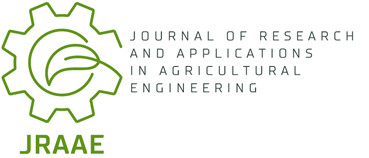Current issue
Online First
Archive
Instructions for Authors
Guide for Authors
Peer Review Policy
Research Ethics Policy
Ghostwriting and Guest Authorship
Copyright
Open Access Policy
Plagiarism
About the Journal
Aim and Scope
Scientific Board
Publisher
Editorial Board
Indexing in Databases
Personal Data Protection
Repository Policy
Contact
ORIGINAL PAPER
Growth, yielding and fruit quality of four cultivars of the japanese plum (Prunus salicina Lindl.) under organic orchard conditions
1
Research Institute of Horticulture ul. Konstytucji 3 Maja 1/3, 96-100 Skierniewice, Poland
Journal of Research and Applications in Agricultural Engineering 2017;62(3):112-116
KEYWORDS
ABSTRACT
In an experiment conducted in the years 2004-2013, the possibility of organic production of the fruit of four cultivars of the Japanese plum (Prunus salicina Lindl.) was evaluated at the Experimental Ecological Orchard in Nowy Dwór-Parcela (central Poland). The studied objects included trees of the cultivars ‘Najdiena’, ‘Shiro’, ‘Vanier’ and ‘Black Amber’ grafted onto Myrobalan seedlings. Under organic orchard conditions, the strongest growing trees were those of the cultivar ‘Shiro’ and the least vigorous those of ‘Vanier’. The highest cumulative yields for the period 2006-2013 were obtained from the trees of the cultivars ‘Najdiena’ and ‘Vanier’. ‘Black Amber’ trees were the lowest-yielding, but the fruits of this cultivar were the biggest. During harvesting, it was found that many fruits had lesions caused by diseases and pests. The extent of the injuries varied depending on the cultivar and the year of the study. The cultivar ‘Vanier’ was the most susceptible to infestation by the plum moth (Laspeyresia funebrana), and the least - the early ripening ‘Najdiena’. Regardless of the year of the study, the highest percentage of decaying fruit due to infection by the brown rot of stone fruits was observed in the crop of the cultivar ‘Vanier’. Among the four cultivars studied, the plum cultivar ‘Najdiena’ characterized by an early fruit ripening time was the most useful for organic orchards.
REFERENCES (22)
1.
Bryk H.: Perspectives of fruit trees protection against diseases with ecological methods. Prog. Plant Protection, 2006, Vol. 46(1), 424-432.
2.
Bryk H.: Możliwości i aktualne potrzeby w zakresie ochrony drzew owocowych przed chorobami w sadach ekologicznych. XLVI Ogóln. Nauk. Konf. Sad. „Nauka praktyce”. Skierniewice, 2010, 119-122.
3.
Garcia-Galavis P. A., Santamaria C., Jimenez-Bocanegra J.A., Casanova L., Daza A.: Susceptibility of several Japanese plum cultivars to pests and diseases in a newly established organic orchard. Scientia Hort., 2009, 123, 2, 210-216.
4.
Głowacka A., Rozpara E.: Growth, yielding and fruit quality of four plum (Prunus domestica L.) cultivars under organic orchard conditions. J. Res. Appl. Agric. Engng, 2014, Vol. 59(3), 56-60.
5.
Głowacka A., Rozpara E.: Growth, yielding and fruit quality of three sweet cherry cultivars under organic orchard conditions. Wzrost, owocowanie oraz jakość owoców trzech odmian czereśni w warunkach sadu ekologicznego. J. Res. Appl. Agric. Engng, 2015, Vol. 60(3),73-76.
6.
Głowacka A. Rozpara E. Danelski W.: Growth, yielding and fruit quality of three sour cherry cultivars under organic orchard conditions. Wzrost, owocowanie oraz jakość owoców trzech odmian wiśni w warunkach sadu ekologicznego. J. Res. Appl. Agric. Engng, 2016, Vol. 61(3), 139-143.
8.
Grzyb Z.S., Rozpara E.: Klasyfikacja niektórych odmian śliwy pod względem wielkości owoców i terminu dojrzewania. Zesz. Probl. Post. Nauk Rol., 2007., Vol. 517, 331-337.
10.
Grzyb Z.S., Rozpara E.: Effect of rootstock on the growth and yielding of ‘Jojo’ plum trees in an ecological orchard. Acta Hort., 2012, Vol. 968, 133-136.
11.
Jaastad G., Roen D., Bjotveit E., Mogan S.: Pest management in organic plum production in Norway. Acta Hort., 2007, Vol. 734, 193-200.
12.
Kahu K., Klaas L.: Organic farming of plums in Estonia. Acta Hort., 2007, Vol. 734, 453-456.
13.
Perczak J.: Metodyka badania wartości gospodarczej odmian (WGO) odrębności, wyrównania i trwałości (OWT) roślin uprawnych. Śliwa domowa, COBORU Słupia Wielka, 2006, wyd. II, 1-26.
14.
nRoen D., Hjeltnes S.H., Jaastad G.: Organic production of plum cultivars. Acta Hort., 2007, Vol. 734, 449-452.
15.
Rozpara E.: Odmiany śliw przydatne do sadów towarowych. Ogólnopolska Konf. pt. „Nowe odmiany drzew owocowych“. Skierniewice, 2006, 43-47.
16.
Rozpara E., Grzyb Z.S.: Wzrost i owocowanie kilku odmian śliwy japońskiej w warunkach Polski Centralnej. XLIV Ogólnopolska Naukowa Konferencja Sadownicza w Skierniewicach, 2006, 56-57.
17.
Rozpara E., Grzyb Z.S.: Growth, yield and fruit quality of eighteen plum cultivars grafted on two rootstocks. Acta Hort., 2007, Vol. 734, 157-162.
18.
Rozpara E., Badowska-Czubik T., Kowalska J.: Problemy ochrony ekologicznej uprawy śliwy i czereśni przed szkodnikami. J. Res. Appl. Agric. Eng., 2010, Vol. 55(4), 73-75.
19.
Rozpara E., Głowacka A., Grzyb Z.S.: The growth and yields of eight plum cultivars grafted on two rootstocks in central Poland. Acta Hort., 2010, Vol. 874, 255-259.
20.
Turcu E., Botu I., Botu M.: Evaluation of the production capacity of some plum cultivars grown in Romania. Acta Hort., 1998, Vol. 478, 179-186.
21.
Zbytek Z.: Wybrane zagadnienia ekologiczne we współczesnym rolnictwie. Możliwości zwalczania chorób upraw ekologicznych w wybranych krajach Unii Europejskiej. Przemysłowy Instytut Maszyn Rolniczych. Poznań, 2015. Monografia, tom 8, 42-53.
22.
Żurawicz E.: Ekologiczne metody produkcji owoców. Krajowe Centrum Rolnictwa Ekologicznego - Regionalne Centrum Doradztwa Rozwoju Rolnictwa i Obszarów Wiejskich. Radom, 2004, 1-145.
Share
RELATED ARTICLE
We process personal data collected when visiting the website. The function of obtaining information about users and their behavior is carried out by voluntarily entered information in forms and saving cookies in end devices. Data, including cookies, are used to provide services, improve the user experience and to analyze the traffic in accordance with the Privacy policy. Data are also collected and processed by Google Analytics tool (more).
You can change cookies settings in your browser. Restricted use of cookies in the browser configuration may affect some functionalities of the website.
You can change cookies settings in your browser. Restricted use of cookies in the browser configuration may affect some functionalities of the website.


